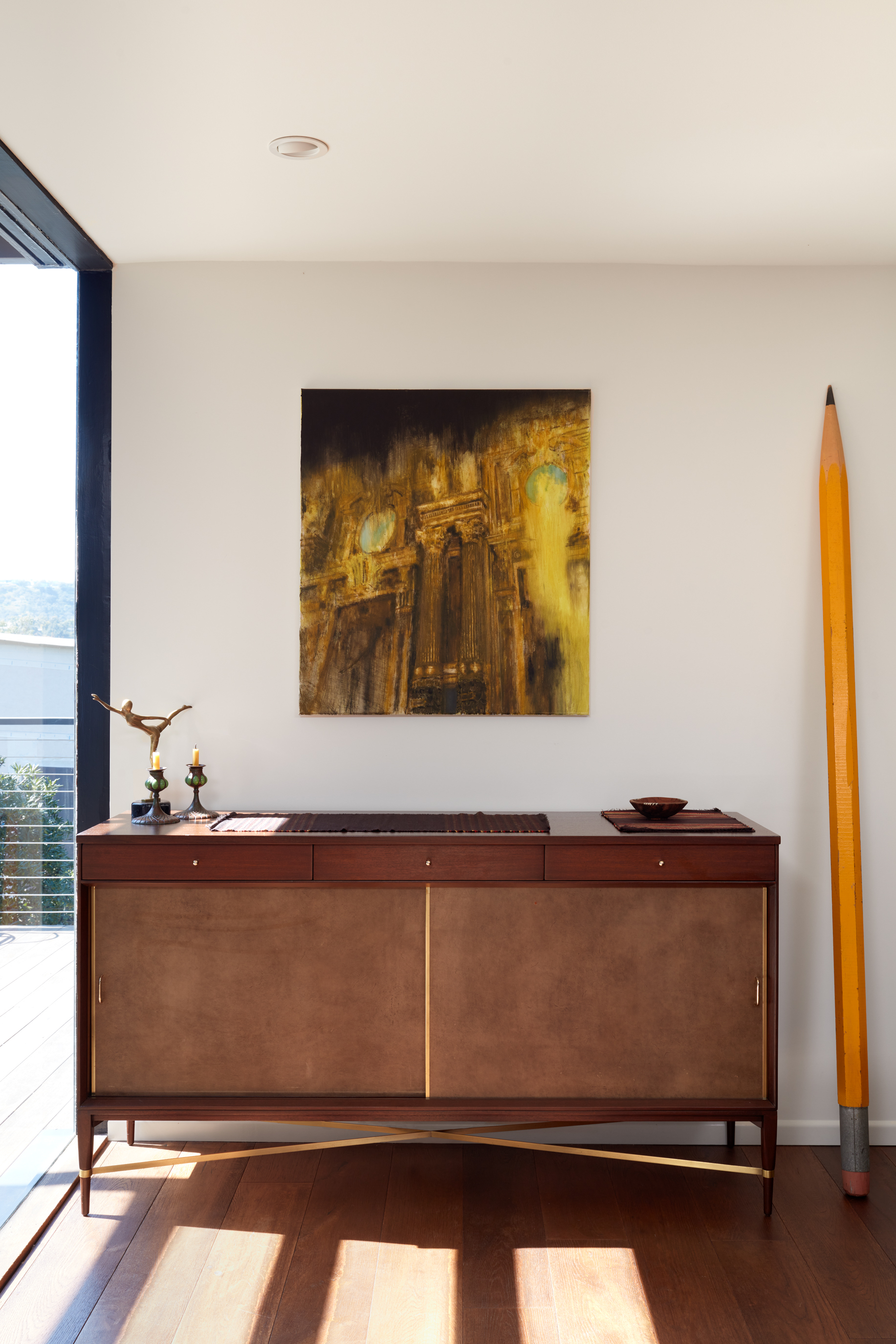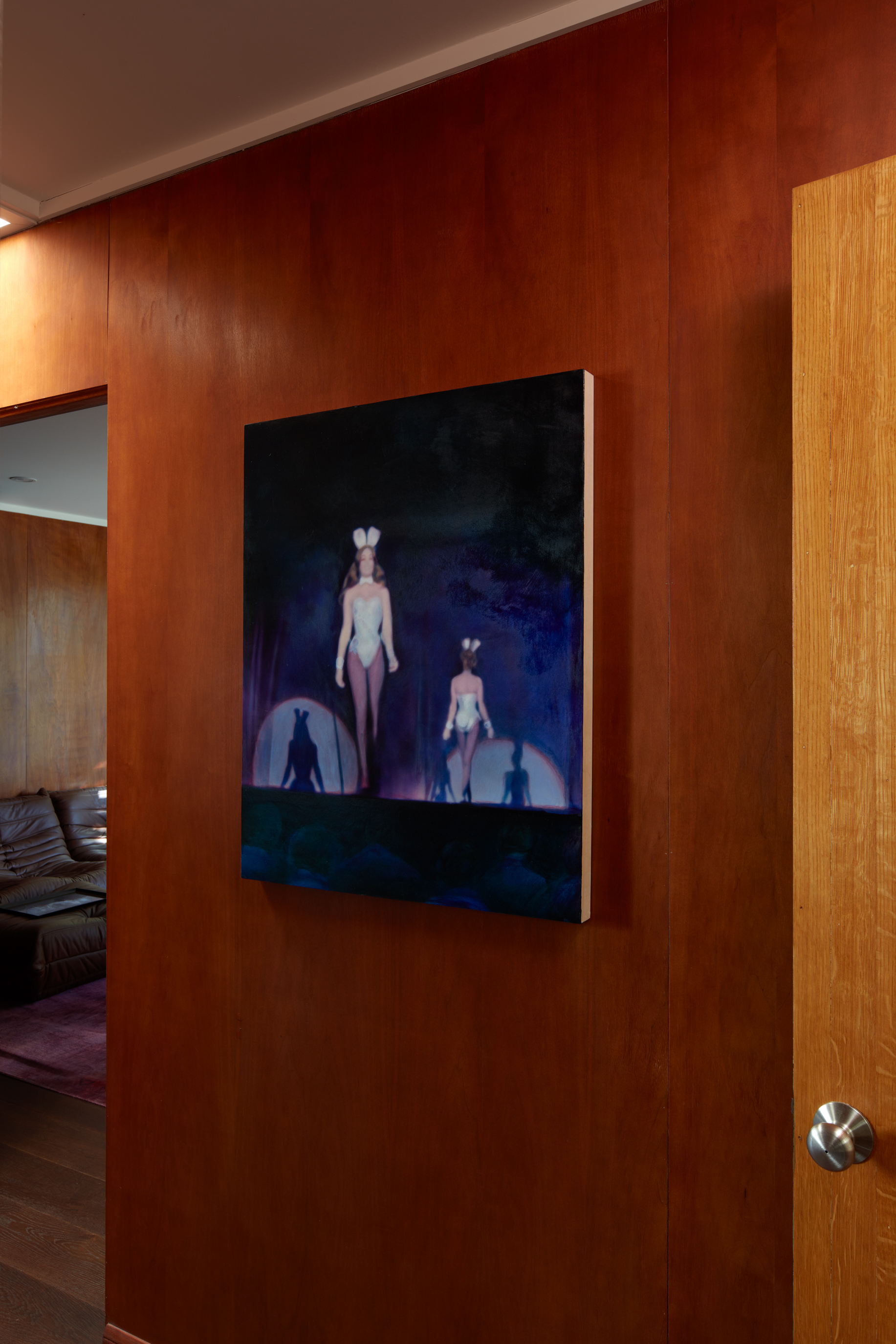




Beautiful Fish in a Man-Made Pond Group Show
27 February – 3 March, 2024
The Wohlstetter House, Los Angeles, CA
To coincide with Frieze Week Los Angeles, Amity, the curatorial upstart founded in 2023 by Jed Moch will exhibit 8 artists in the Wohlstetter house, built in 1953 in the Hollywood Hills by architect Josef Van der Kar for the enigmatic nuclear arms strategist who
inspired Kubrick’s ‘Doctor Strangelove’. The exhibition takes the broad thematic framework of exploring the disconnect between surface and reality as interpreted by eight artists working across graphite, paint, sculpture, and film.
Anchored largely by the precedent set by both the Pictures Generation (Charlesworth) and Pop Ar (Ruscha) movements that defined the second half of the 20th century, each artist foregrounds imagery laden with preexisting associations but upon further reflection seek to expand upon, undermine o contradict those projections.
inspired Kubrick’s ‘Doctor Strangelove’. The exhibition takes the broad thematic framework of exploring the disconnect between surface and reality as interpreted by eight artists working across graphite, paint, sculpture, and film.
Anchored largely by the precedent set by both the Pictures Generation (Charlesworth) and Pop Ar (Ruscha) movements that defined the second half of the 20th century, each artist foregrounds imagery laden with preexisting associations but upon further reflection seek to expand upon, undermine o contradict those projections.
Cristine Brache examines the complex legacy of Playboy playmates at a time when the world has seemingly evolved beyond the context they initially took hold in. Here, she presents two encaustic
paintings rendered from a mix of still images pulled from Super 8 film, sometimes altered further by AI, before being printed on silk, stretched on canvas and coated in wax and pigment. The result is a portrait of these women suspended in time, both removed from and perpetually caught in the gaze that had once defined them.
paintings rendered from a mix of still images pulled from Super 8 film, sometimes altered further by AI, before being printed on silk, stretched on canvas and coated in wax and pigment. The result is a portrait of these women suspended in time, both removed from and perpetually caught in the gaze that had once defined them.
Krakow based Lukasz Stoklosa’s practice is largely shaped by his intimately scaled take on the palaces and estates that once housed European aristocracy, but now exist almost as mausoleums for a kind of wealth and lifestyle that no longer exists. Instead, these spaces are preserved in amber and visited by the masses as a means of recalling the type of luxury and elegance that now evades them. He playfully disorients the viewer further by including imagery that looks part and parcel to these same themes but in fact are culled from various other forms of media and entertainment – most commonly, the 1980’s TV melodrama ‘Dynasty’- here inserting the cake from a wedding in season 8 as an implicit nod to the malleability of surface and the ease of reproduction.
Two films play on loop as part of the exhibition- Lynn Hershman Leeson’s 1975 ‘Lynn Turning Herself Into Roberta’ and Martine Gutierrez’ ‘China Doll’ 2021. Each film playing interchangeably on loop features the artist as the subject, in Leeson’s case self-documenting her turn from the ‘self’ into her performanc character ‘Roberta’ while applying make-up seated at a vanity, and in Gutierrez’ case, performing as an unnamed character reflecting aloud alongside a series of male mannequins on traits by which she defines herself first as human, second as woman.
The exhibition is on view by appointment at the Wohlstetter house through 3 March, 2024.
The exhibition is on view by appointment at the Wohlstetter house through 3 March, 2024.
